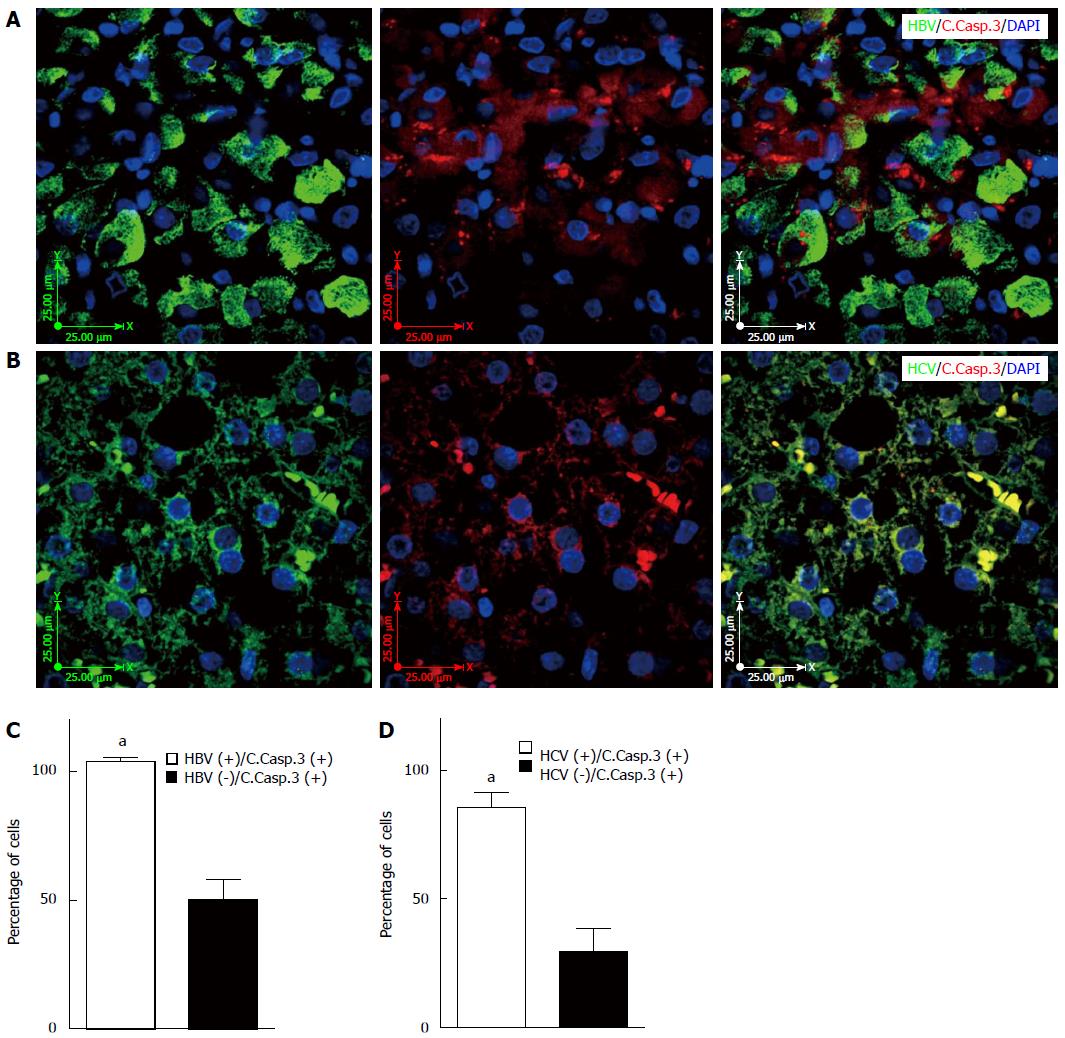Copyright
©The Author(s) 2015.
World J Gastroenterol. Dec 21, 2015; 21(47): 13225-13239
Published online Dec 21, 2015. doi: 10.3748/wjg.v21.i47.13225
Published online Dec 21, 2015. doi: 10.3748/wjg.v21.i47.13225
Figure 4 Hepatitis B and C virus infection induces apoptosis in the infected liver tissue.
A: Immunofluorescence double-labeling shows co-localization of hepatitis B virus (HBV) and cleaved caspase-3 in the HBV infected liver tissue; the image is representative of fluorescence immunohistochemistry (IHC) for all patients; B: Immunofluorescence double-staining shows co-localization of hepatitis C virus (HCV) and cleaved caspase-3 in the HCV infected liver tissue; the image is representative of fluorescence IHC for all patients; C: HBV infection significantly (aP < 0.001 vs HBV-) induces apoptosis in the infected hepatocytes compared to non-infected adjacent cells. The graph shows results of the event (HBV infection and cleaved caspase-3) in at least 50 cells counted in four different microscopic fields from each patient’s sample; D: HCV infection significantly (aP < 0.001 vs HCV-) induces apoptosis in the infected hepatocytes compared to non-infected adjacent cells. The graph shows results of the event (HCV infection and cleaved caspase-3) in at least 50 cells counted in four different microscopic fields from each patient’s sample.
- Citation: Yeganeh B, Rezaei Moghadam A, Alizadeh J, Wiechec E, Alavian SM, Hashemi M, Geramizadeh B, Samali A, Bagheri Lankarani K, Post M, Peymani P, Coombs KM, Ghavami S. Hepatitis B and C virus-induced hepatitis: Apoptosis, autophagy, and unfolded protein response. World J Gastroenterol 2015; 21(47): 13225-13239
- URL: https://www.wjgnet.com/1007-9327/full/v21/i47/13225.htm
- DOI: https://dx.doi.org/10.3748/wjg.v21.i47.13225









